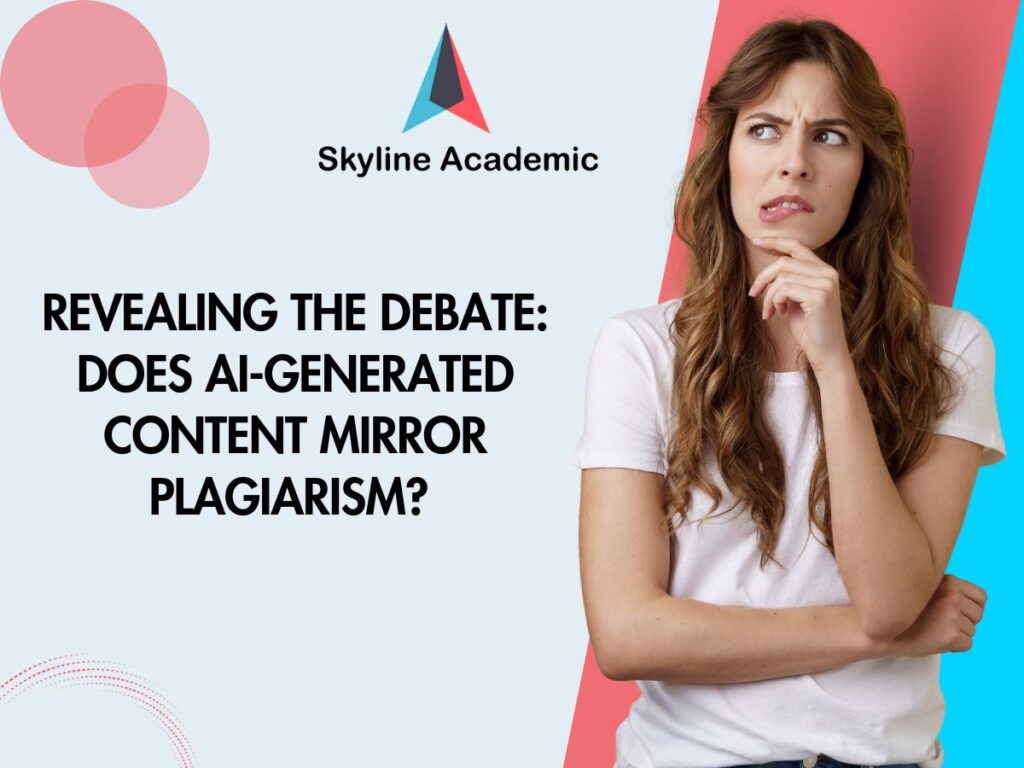Defining Plagiarism?
Before we delve into the complexity of AI-generated content, let’s first discuss the basic idea of plagiarism. Plagiarism is an act of exploiting someone else’s idea, expression, or intellectual property without formal permission from the relevant individual. In traditional content creation, this often involves copying and pasting text from a source without crediting the original author or source.
The Development of AI-generated content
AI-generated content, mostly produced by language models like GPT-3, has gained huge significance in recent years. But how do AI models work?
These models work on creating human written content with proper coherence and relevancy by using vast data sets. They have been used in various fields, from marketing and journalism to creative writing and customer service.
Is AI- Generated Content Plagiarism?
The increasing use of various software programs and websites producing automated content has posed a highly controversial question of whether this AI- content is plagiarism or not. The answer to this question can be explained logically through the following various perspectives:
Technical Perspective
Technically speaking, plagiarism refers to the copy-pasting of someone else’s work or content without providing references. However, AI-generated content imitates the human written styles and ideas of content creation rather than literally copy-pasting the human content. Therefore, it cannot be considered plagiarism technically.
Ethical Perspective
In AI-generated content creation, the ethical dilemma arises from the idea that it can eliminate the difference between the original human-written content and the automated one. Following are some key aspects to consider vis-à-vis:
| LACK OF ORIGINALITY | PROPER ATTRIBUTION | DEVALUATION OF HUMAN LABOR |
| AI-written content is, by default, not original showing a lack of human creativity. It is operated by imitating the already existing patterns of human written data. As a result, it fails to engage the targeted audience in the way original human-written content can. | AI-generated content miserably fails to credit the original source from where data is imitated. Consequently, it undermines the hard work of the original author and leads to issues like a lack of transparency and accountability. | AI-written content poses a major threat to original human-generated creative content. As this automated content is more sophisticated and generally error-free, it eventually leads to the devaluation of human labor and impacts the employment in content creation industry. |
To make sure your content is ethically unique, refer to Skyline Academic’s advanced AI detection tool.
Legal Perspective
From a legal perspective, the question of automated content and plagiarism is relatively unfamiliar to date. Typically, human-generated content is protected by copywriting laws, but these laws don’t address the problem of AI-generated content. Consequently, it enables the user to exploit AI technologies to generate plagiarized content vehemently without any accountability.
Examples of AI-generated Content
To explain the complexities of AI-generated content associated with plagiarism, let’s discuss some real-world examples:
- Article writing
AI-powered tools like OpenAI’s GPT-3 can generate news articles on a vast range of topics. These articles mimic the basic ideas of already present human written analysis on various topics and cannot be distinguished from those originally written by human journalists and writers. This raises concerns about the potential spread of misinformation and the erosion of trust in journalism.
- Application in content creation:
AI has been used to create stories, novels, and even poetry in minimal time. For example, Sass Book is an authorized website that produces AI-generated stories and even blogs of various niches. It clearly explains how algorithms are utilized to imitate human written literary styles.
- Marketing Content:
In recent times, AI- content has been used to write product descriptions and social media posts efficiently. Albeit it can save much valuable time and effort of human labor, it lacks the unique creativity to attract the targeted audience which only human-written content can do.
Conclusion:
The vast application and usage of AI-generated content has created a potential question of whether this automated content can be characterized as plagiarism. While AI is a powerful tool for content creation, its increasing application poses a major threat to human labor and creates a lack of originality in the content which ultimately fails to engage the right targeted audience. Moreover, it creates the question of plagiarism of existing human written content. Technically, AI-generated content cannot be declared as plagiarized content.
However, the ethical and legal guidelines show that AI-generated content is somehow a form of uniquely plagiarized human-written original content but with a lack of creativity and originality. Therefore, the decision on whether the specific AI-generated content is plagiarized or not will depend on the circumstances of the particular case considering the ethical and legal implications involved.
If you are willing to create unique content without any plagiarism, then you can use our tool to enhance originality and promote ethical integrity.
